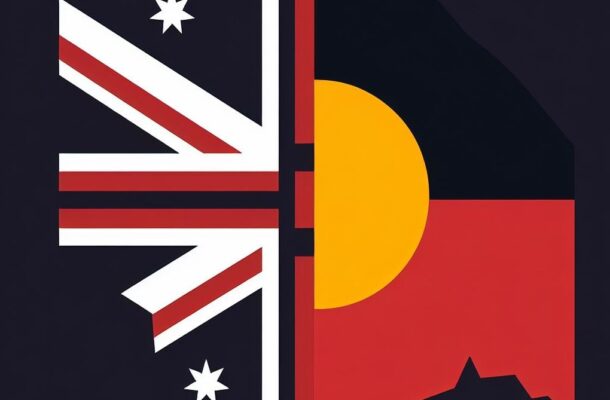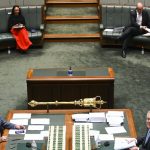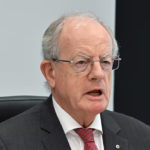One voice, shared values

Comparing two-party preferred percentages for general elections to the Voice referendum percentages, reveals that the margin between the yes and no votes was much wider than in general elections and the result did not reflect normal party allegiances. There is ample scope, therefore, to be optimistic about bi-partisan support for the work of assisting First Nations communities to find solutions to the issues they face.
The present federal LNP opposition established the National Indigenous Australians Agency (NIAA) whilst in government, well before the referendum. Their 2022–23 Budget allocated $6.7 billion in the forward estimates to the Indigenous Advancement Strategy which is administered by the NIAA. The strategy focuses on creating jobs, building skills, and unlocking the economic potential of Indigenous land.
Dedicated people, indigenous and others, on both sides of politics, have worked for many decades trying to overcome Indigenous disadvantage.
Federal cabinet is reportedly considering an ‘interim listening mechanism’ following the defeat of the Voice referendum. Lessons drawn from the referendum could serve as guidelines to inform the existing agencies and others working for Indigenous Advancement.
Changing the constitution to align with a fashionable paradigm or popular sentiment would be to hand the future to any would-be tyrant able to muster a crowd.
The founders of our federation would have been mindful of the (then) relatively recent tragedy of the American civil war when they stipulated that constitutional change could only occur after the proponents had met very stringent criteria. As we have seen, advertising and propaganda were no substitute for the great deal of thought and effort that is necessary to convince a majority of people in a majority of states.
UNSW Constitutional Lawyer, Prof. George Williams, says that the system for amending the constitution is “broken” and needs to be fixed (“The Australian” 23/10/2023). He advocates a cross-party parliamentary inquiry into the conduct of the Voice referendum by the Joint Standing Committee on Electoral Matters. Recommendations would be debated at a representative constitutional convention held every decade before being put to the people at a referendum.
Asking politicians to review and regulate their own behaviour does seem a little optimistic. After years of posturing and promises, a general code of conduct applicable to all members of Parliament has yet to be introduced.
I agree with Prof. Williams that Australians will vote yes in referendums if the right proposals are put in the right way. By wrapping two questions in one package, as John Howard did with the republic referendum, the government virtually guaranteed that the Voice referendum would be defeated. It seems that there is no realistic way to be sure that politicians will do other than what they think will advance their political agendas.
Indigenous leaders say that victimhood ends with self-determination. But why should self-determination for Indigenous people depend on a ‘Voice’ to Parliament? In other words, being on the outside looking in.
The existence of latent electoral power within Indigenous communities was overlooked in the public discourse around the Voice referendum. Indigenous communities could wield significant electoral power if they mobilised the large cohort of non-participating eligible Indigenous vote to lobby for policy changes.
The number of Indigenous electors exceeds the vote margin held by incumbents in a number of electoral divisions. The ‘yes’ campaign insisted that the Voice would be innocuous and advisory only. However, the high ratio of eligible Indigenous voters to electoral margin in some electorates suggests that the Voice would have become a significant political force.
It is to be expected that a Voice to Parliament would grow and evolve as necessary to serve its purpose.
A more politicised Voice might not conform with its intentions as originally proposed, or with popular expectations, but its potential to influence public policy would not have gone unnoticed.
Preference whisperers and their like would have been trolling for electoral advantages that a Voice to parliament enshrined in the constitution might represent.
The NIAA has been operating since 2019 with a budget of $2.6 billion. Subject to its Diversity and Inclusion policy, more than 20% of NIAA staff, including the CEO, are Indigenous. The vision and purpose of the Agency are virtually the same as those of the proposed Voice.
The NIAA website states: “We work directly to and support the Minister for Indigenous Australians. We work to influence policy across the entire Australian Government. We also liaise closely with State and Territory governments to ensure that Indigenous programs and services are delivering for Aboriginal and Torres Strait Islander peoples as intended.”
With due respect to Prof. Williams, I would suggest that the system for amending the constitution isn’t broken; like any other procedure or system, it can’t be expected to work properly when misused.
The power of parliaments and the authority of governments to allocate resources to agencies such as NIAA, is ultimately the gift of the people.
Instead of a Voice to Parliament, Indigenous people could choose to have more voices in Parliament. Political organisation is the way to empower Indigenous people to choose self-determination over dependency and marginalisation.

Max Thomas, Dip. Agric. (retired) worked in the public sector and in private consulting on a range of land, water and waste management projects. He prepared guidelines for irrigation with recycled water for EPA Victoria and developed a number of Environmental Management Systems in the water industry.














